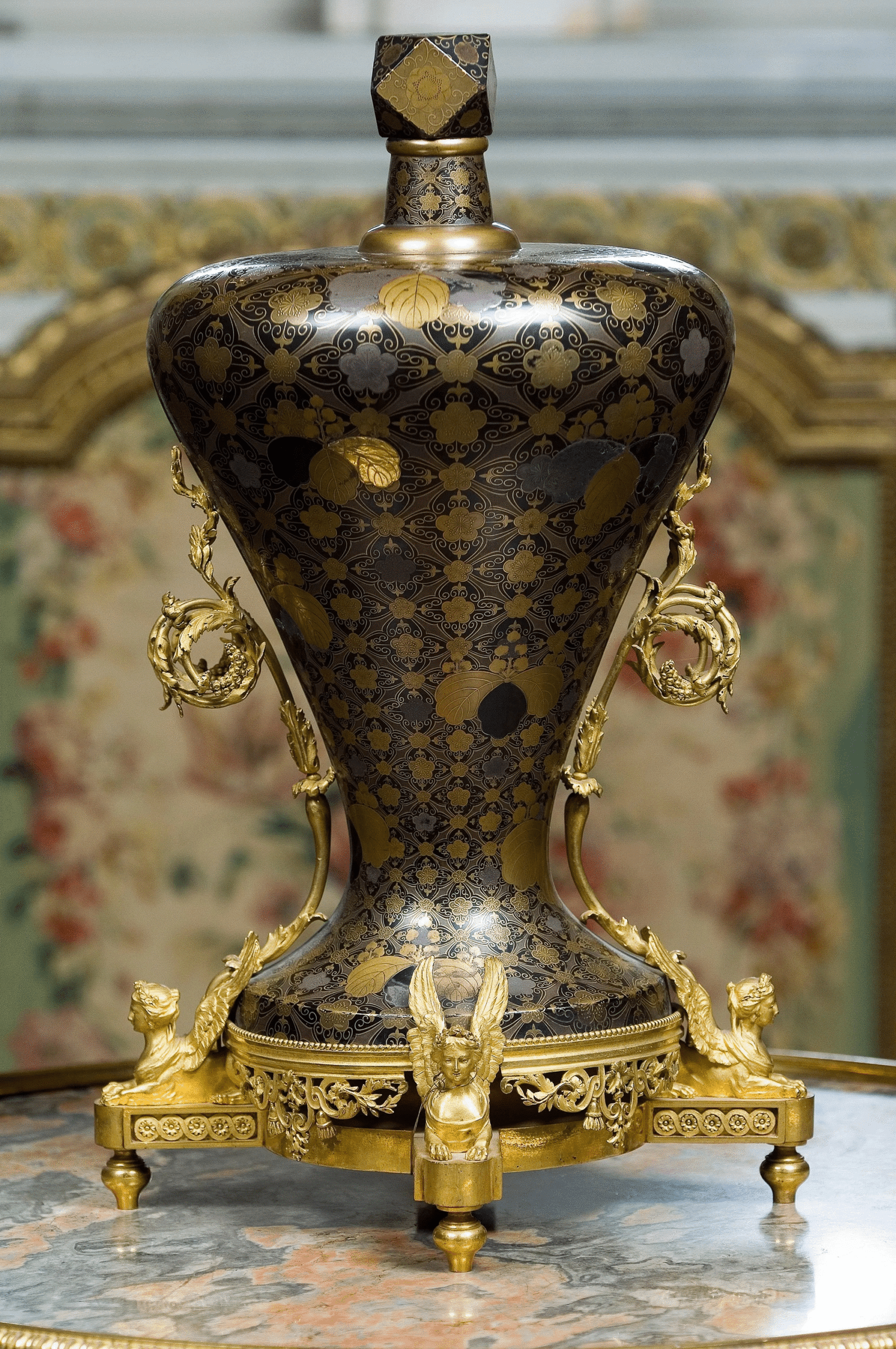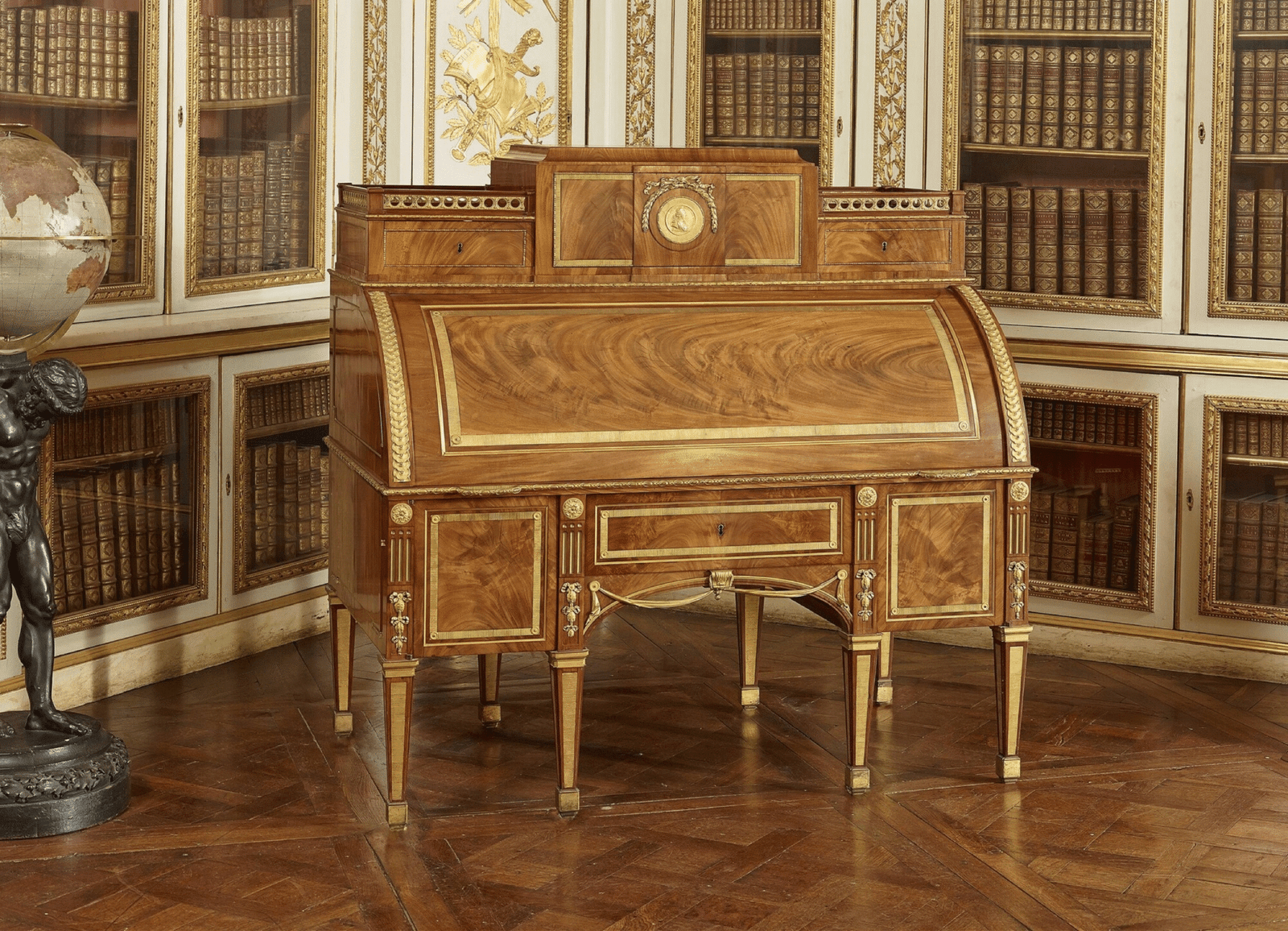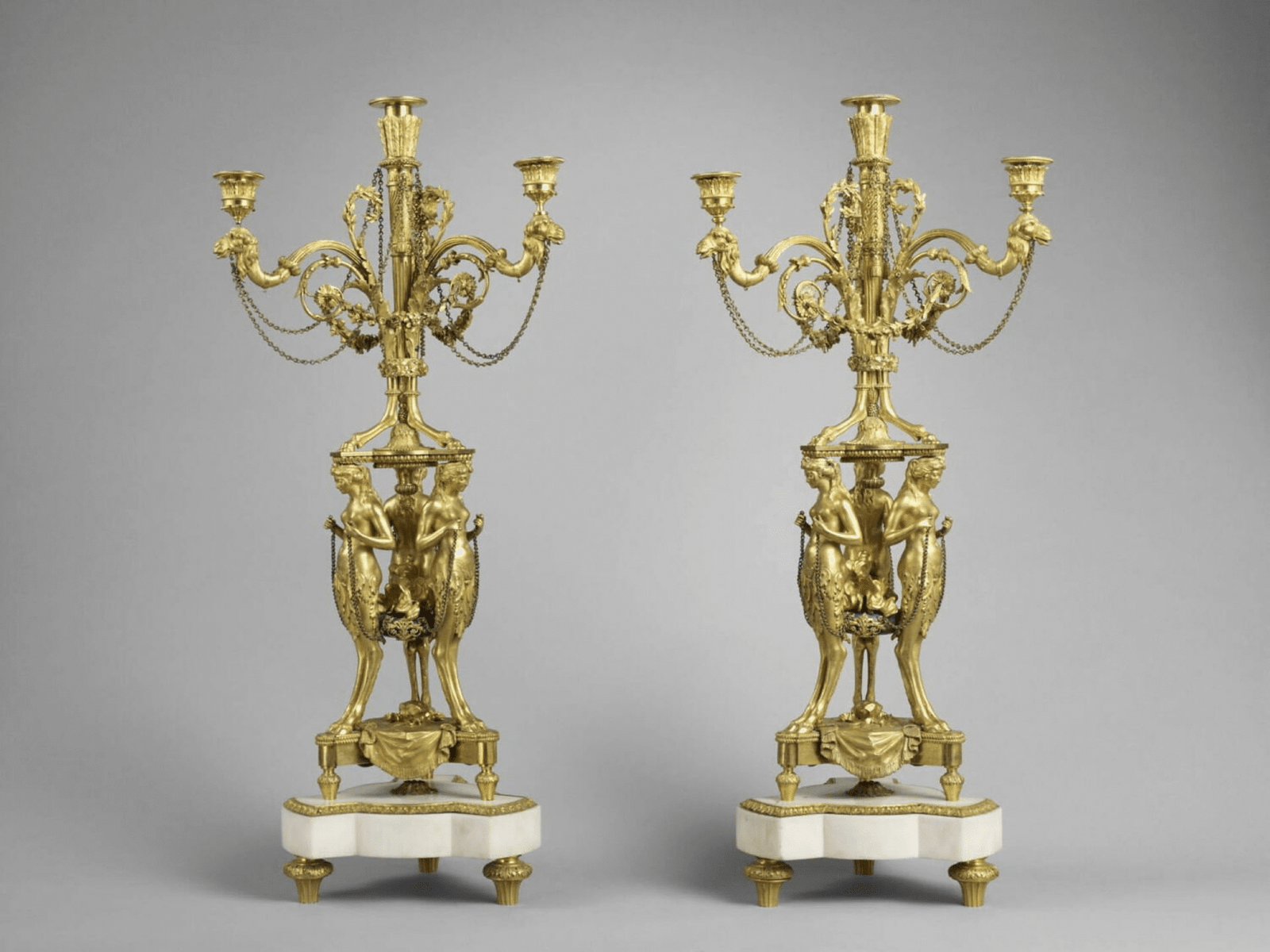
François-Aimé Damerat (after), François Rémond (bronze), Allegory of Science, circa 1785–1790, New York, Metropolitan Museum of Art (inv. 07.225.510.416)
An eminent bronze-maker of the reign of Louis XVI, François Rémond (1745÷1747−1812) contributed to the creation of some of the finest pieces of furniture and works of art of the period. Long overshadowed by his fellow craftsman Pierre Gouthière (1732–1813), the rediscovery of his account books in 1983 revealed the full extent of his talent.

François Rémond (bronzes), Sake bottle from the collection of the Marquise de Pompadour, mounted, 1783, Paris, Musée Nissim de Camondo (inv. CAM 144)
© MAD, Paris / photo : Jean-Marie del Moral
François Rémond began his apprenticeship in 1763 with the gilder Pierre-Antoine Vial. In 1774, he was received as a master gilder and thus began a brilliant career. Rémond soon headed a large workshop capable of casting, chasing, and gilding the bronzes it produced. He employed many journeymen and entrusted the casting of certain pieces to outside workshops, notably the Forestier family. He drew inspiration from the models of the leading sculptors of his day—particularly Louis-Simon Boizot (1743–1809), with whom he regularly collaborated—and also created his own designs. By the 1780s, he was among the most prosperous craftsmen in his guild. His solid reputation brought him into contact with the finest artisans, merchants, and collectors. He collaborated with Jean-Henri Riesener (1734–1806) on the ornamentation of some of his furniture, and in the 1780s worked with the German cabinetmaker David Roentgen (1743–1807) on some of his most remarkable creations. The latter delivered nearly 130 pieces of furniture to Empress Catherine II of Russia in 1786, many of them mounted with bronzes by Rémond.

David Roentgen (cabinetmaking), François Rémond (bronzes), Rolltop desk, probably acquired by Louis XVI in 1781, circa 1781, Versailles, Châteaux de Versailles et de Trianon (inv. OA 5228)
© Château de Versailles, Dist. RMN / © Christophe Fouin
François Rémond was particularly well connected among the Parisian marchands merciers. He worked for the most prominent of them—Granchez, Julliot, and above all Dominique Daguerre. From 1779 to 1792, he supplied Daguerre with bronzes worth the colossal sum of 920,000 livres, equivalent to several million euros today. As the principal supplier to Queen Marie-Antoinette, Daguerre collaborated with the best craftsmen of his time—Adam Weisweiler, Jean-Henri Riesener, and Pierre Gouthière—whom he enlisted to serve the most discerning collectors. Through Daguerre, Rémond thus contributed to the creation of magnificent pieces. In 1783, he embellished two lacquer saké bottles from the collection of the Marquise de Pompadour with graceful gilt-bronze mounts, one of which is now preserved at the Musée Nissim de Camondo. After the Revolution, he continued to supply the marchand mercier, who had moved to London, and later his associate Lignereux. Many of the bronzes at Carlton House, the London residence of the Prince of Wales, were of his making. A sumptuous secrétaire from the collection of Galerie Léage, executed around 1792 by Weisweiler and Rémond, offers another example of these splendid collaborations.

Adam Weisweiler (cabinetmaking), François Rémond (bronzes attributed to), Dominique Daguerre (probably made under the direction of), Lacquer secretary, circa 1792–1795, Galerie Léage, former Alphonse then Edouard de Rothschild’s collection
Rémond’s immense talent gained him a particularly prestigious clientele. As Gouthière’s workshop declined, Rémond took over several major commissions, notably for the Comte d’Artois at Bagatelle, the Temple, and Versailles. Firedogs, candelabra, wall lights, and chandeliers rivaled one another in richness and sophistication. The pair of candelabra with ostriches, delivered in 1782 for the Turkish Cabinet of the Comte d’Artois at Versailles, testifies to the bronzier’s undisputed skill. He also took part in the creation of the writing table delivered by Daguerre in 1784 for the Queen’s private cabinet at the Château de Saint-Cloud. Of exceptional richness, it combines lacquer panels with gilt-bronze and steel ornamentation. Among his other clients, Rémond counted the Dukes of Orléans and Penthièvre, the Prince of Wales, and Princess Kinsky in Paris—all refined connoisseurs.

Adam Weisweiler (cabinetmaking), François Rémond (bronzes), Writing table delivered in 1784 by Daguerre for Marie Antoinette’s boudoir at Saint-Cloud, circa 1784, Paris, Musée du Louvre (inv. OA 5509)
© 2012 Musée du Louvre, Dist. GrandPalaisRmn / Thierry Ollivier
Fully in keeping with the fashion of his time, Rémond was one of the leading interpreters of the turkish taste. His works abound with sphinxes, griffins, arabesques, draperies, and chains—motifs characteristic of this taste nourished by a fanciful exoticism. His many commissions for the Comte d’Artois and Marie-Antoinette, both fascinated by the Orient, bear witness to it. Rémond himself contributed to this style by designing original models. Candelabra composed of three female fauns leaning against a smoking brazier were delivered for the Comte d’Artois’s Turkish Cabinet at Versailles in 1783, and reproduced in 1785 for Princess Kinsky. Varying his motifs, the bronzier later imagined candelabra composed of a seated sphinx for the same patron. The model proved highly popular: between 1783 and 1787, he produced thirteen similar pairs, twelve of which were delivered to Daguerre.

François Rémond, Candelabra with faunesses, based on a model created for Princess Kinsky, circa 1783, Paris, Musée du Louvre (inv. OA 6896)
© 2011 Musée du Louvre, Dist. GrandPalaisRmn / Thierry Ollivier
A masterpiece of virtuosity and elegance, François Rémond’s oeuvre embodies the perfection of gilt-bronze craftsmanship under the reign of Louis XVI. His success endured after the Revolution, though by the early nineteenth century he gradually yielded his place to Pierre-Philippe Thomire (1751–1843).
Bibliography:
Pierre Verlet, Les Bronzes Dorés Français du XVIIIe siècle, Éditions Picard, 1999
Anne Forray-Carlier, Sylvie Legrand-Rossi, Béatrice Quette, De Bronze et d’Or. Bronzes dorés du musée Nissim de Camondo, Les Arts Décoratifs, 2024
Christian Baulez, “François Rémond et le goût turc dans la famille royale au temps de Louis XVI”, in L’Objet d’Art n°2, décembre 1987, p.35–45
